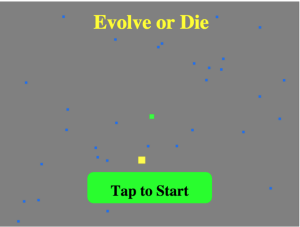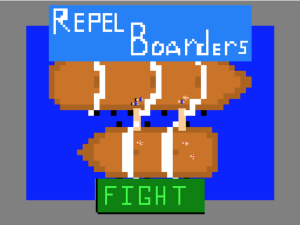This is a continuation of the last post of my notes on this talk by Jim Rohn.
Personal Development – Continued
The 5 Abilities
#1 Absorb – be like a sponge, don’t miss anything
Learn to get from the day, not through the day.
Wherever you are, be there. Let your heart, mind and soul take “pictures”.
Pay attention.
#2 Respond – let life touch you
Don’t let it kill you, but let it touch you.
Give in to emotion.
Your emotion needs to be as educated as your intellect.
Need to know how to respond to life, to people.
#3 Reflect – go back over, study it again, remember
Go back over books, notes, your day.
Good times to reflect:
- At the end of the day for 1 hour
- At the end of the week for a few hours
- At the end of the month for half a day
- At the end of the year take a weekend
Solitude when you reflect is important. You can reflect with your spouse, your family, or your colleagues, but it is important to spend some time to reflect with yourself.
Reflection makes the past more valuable for the future. Gather up the past and invest it in the next day, the next week, the next year.
Self development earns respect, makes you better for others.
#4 Act – take action, don’t be hasty, but don’t waste much time
Act when the idea is hot and the emotion is strong. Otherwise you fall prey to the Law of Diminishing intent.
All disciplines affect each other.
Everything affects everything else
Every let down in discipline affects the rest of your performance.
Every new discipline affects the rest of your performance. That is why action is so important.
Greatest value of discipline: Self Worth or Self Esteem. Lack of discipline erodes the psyche, affects your philosophy. One neglect leads to another. Just start the smallest of disciplines and watch how it grows into another and another.
Walk away from the 97% who won’t do what they can. Don’t talk like they talk, don’t read what they read, don’t watch what they watch, don’t use their excuses and their blame list.
Affirmation without discipline is the beginning of delusion.
Labor well, learn well, discipline yourself well. Take charge of your own retirement, life, day, family, possibilities. Join the 3% of people who are doers.
Do what you can. Do the Best you can. And Rest very little.
Make rest a necessity not an objective. The objective of life is to act
#5 Share – pass along to someone else
If you share with 10 people, they get to hear the idea once and you get to hear it 10 times. You will get more out of it.
Everybody wins when somebody shares.
Sharing helps you, helps the person you share with. Sharing makes you bigger than you are. Increases your capacity. So you can hold more of the next experience.
Some people can’t be happy and can’t be wealthy because they aren’t big enough.
Setting Goals
Goals are your vision of the future.
You can either face the future with apprehension or with anticipation. Most face it with apprehension.
If you don’t make plans of your own, you will fall into someone else’s plan.
Need to make a “Not Much” list. If economy improves, if taxes get a little smaller, if you get a small raise at your job, if your negative relatives become positive, if the “right” political party got in power, etc, it would not do much for you. And too many people are counting on this list.
Count on your ability to design the future. If the promise of the future is clear and powerful, the price is easy to pay. The price is a few small disciplines practiced every day.
Get a handle on the future, set your own goals.
It is this simple: Decide what you want and write it down. Thats it.
It is your own private list so write whatever you want on it, no matter how small or silly.
Keep your list year after year so you can go back and look at it.
Get together with your spouse, your kids, your colleagues and come up with some goals.
Put “Become a Millionaire” on your list, for what it will make of you to achieve it.
The greatest value in life is not what you get, it is what you become.
Major question to ask on the job is not “What am I getting here?”. The major question to ask is “What am I becoming here?”.
When you have become a millionaire, what is important is not the money, you can give that away. What is important is the kind of person you have become.
Set the kind of goals that will make something of you to achieve them.
Don’t set goals to low. Don’t join the easy crowd. Go where demand to grow is high, where expectations of excellence are strong.
Don’t compromise. Don’t sell out. Count the cost.
Judas got the money, success? NO.
Greatest source of unhappiness is self unhappiness. Starts with being a little less than you can be. Beware of this.
Financial Independence
What should a child (or an adult) do with a dollar?
Don’t spend more than $0.70 of every dollar.
If your outgo exceeds your income, your upkeep will be your downfall.
What to do with the other $0.30?
This is an ideal. Set it up and work towards it. It’s not the amount that counts, it is the plan. You can start with 97/1/1/1. The numbers will change. It is just a good sample philosophy.
Keep strict accounts. Now where your money is going. Don’t let it “just get away from you.”
Get a new attitude.
“Hate to pay my taxes,” get past this. Taxes help pay for democracy, liberty, and freedom that is the goose that lays the golden eggs.
“Hate to pay my bills,” get beyond this. Bills reduce your liability and increase your assets.
Everybody must pay, even if its only pennies.
Spend, invest, show a profit, help others.
Communication
Effective communication is how to affect people with words.
Words can work miracles. They are powerful and can have dramatic effects.
Have Something Good to Say, Be Prepared
Interest
Show interest in the subject.
Then go beyond that and show fascination. Turn frustration into fascination if you can.
Sensitivity
Understand other people. You have to be touched and moved by the drama in other peoples lives so you connect with them where they are. This involves emotion.
Knowledge
Take notes. Gather knowledge. Don’t be lazy in learning.
Say It Well
- Sincerity
- Repetition – Mother of Skill
- Brevity – sometimes you don’t need many words
- Vocabulary – There is a relationship between vocabulary and behavior. Words are a way of seeing and expressing. Stretch your vocabulary
Read Your Audience
- What your see – body language
- What you hear – kids will tell you
- What you feel – emotional signals (women naturally better at this than men)
Intensity
Your words need to be mixed with emotion. It has an incredible effect. Put more of you into what you say.
Don’t be casual in communication.
Emotions must be measured. “Don’t shoot a cannon at a rabbit.”
You need well chosen words mixed with measured emotion. The more you care, the stronger you can be.
The Negative and the Positive
Negative
There is a time to laugh and a time to cry. Life is not all positive.
Negative is normal, it is a normal part of life. It should not be ignored because it needs to be mastered.
Need the ant philosophy. Never quit and think winter all summer.
Positive
The day that turns your life around.
Things that turn your life around:
- Disgust – normally associated as negative, but can be positive. It is when you say, “I’ve had it. No more. Enough is enough.” If you can add an act to it, that helps.
- Decision – you can make a decision that turns your life around.
- Desire – wanting to bad enough. Sometimes desire waits for a trigger (like meeting someone, or not being able to do something that you want). Welcome all experiences because you never know which one will turn everything on.
- Resolve – saying “I will.” Do or Die. Promising yourself you will never give up. “Until,” do it until you succeed.
Final Thoughts
Learn to help people with their lives. Touch people with a book, with words. Help them with their goals and dreams.
If you work on your gifts, they will make room for you.
Conclusion
Great advice. Take charge of your own future. Make plans, set goals, and act on them.
If you will change, everything will change for you



